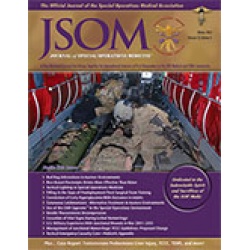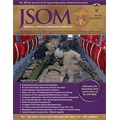Tactical Emergency Casualty Care-Pediatric Appendix: Novel Guidelines for the Care of the Pediatric Casualty in the High-Threat, Prehospital Environment
Bobko JP, Lai TT, Smith R, Shapiro G, Baldridge T, Callaway DW 13(4). 94 - 107 (Journal Article)
Background: Active shooter events and active violent incidents are increasingly targeting civilians, placing children at heightened risk for complex and devastating trauma. The U.S. Department of Homeland Security has identified as a priority preparing domestic first responders to manage complex mass casualty incidents as a primary step in strengthening our medical system. Existing literature suggests that many prehospital providers are uncomfortable treating critically ill or injured pediatric patients and that there is a gap in the consistent provision of high-quality trauma care to these patients. The success of threat-based care developed by the military has led to an exponential rise in the familiarity and utilization of these concepts within certain specialized elements of civilian care. Evolution of these concepts is accelerating to meet the demands of the nonmilitary civilian environment through the formation and subsequent work of the Committee for Tactical Emergency Casualty Care (C-TECC). However, a gap remains in the available literature describing the application of these principles to specialized populations. Methods: In the absence of an evidence-based set of guidelines for prehospital care of the pediatric casualty, the C-TECC sought to establish a set of peer-reviewed guidelines to serve as a foundation describing current best practices. The Pediatric Working Group (PWG) utilized the adult TECC guidelines as a starting point and identified a series of key questions regarding trauma interventions. The PWG conducted a standard PubMed search to identify key relevant or potentially relevant literature. The literature review was presented to the C-TECC Guidelines Committee for review and approval of recommended principles. Recommendations: Given the dearth of supporting literature on the subject, the TECC committee was purposefully conservative in the adaptation of the adult TECC guidelines to a pediatric standard. The guidelines highlight information tailored to the pediatric population and were designed to be a resource for individual agencies seeking guidance for high-threat operations. To our knowledge, the TECC Pediatric Appendix is the first published recommendation for the widespread use of tourniquets in pediatric hemorrhage. In addition, the Guidelines are meant to highlight gaps in trauma literature and stimulate discussion regarding future research in the area of prehospital care of the pediatric casualty.


 Español
Español 




